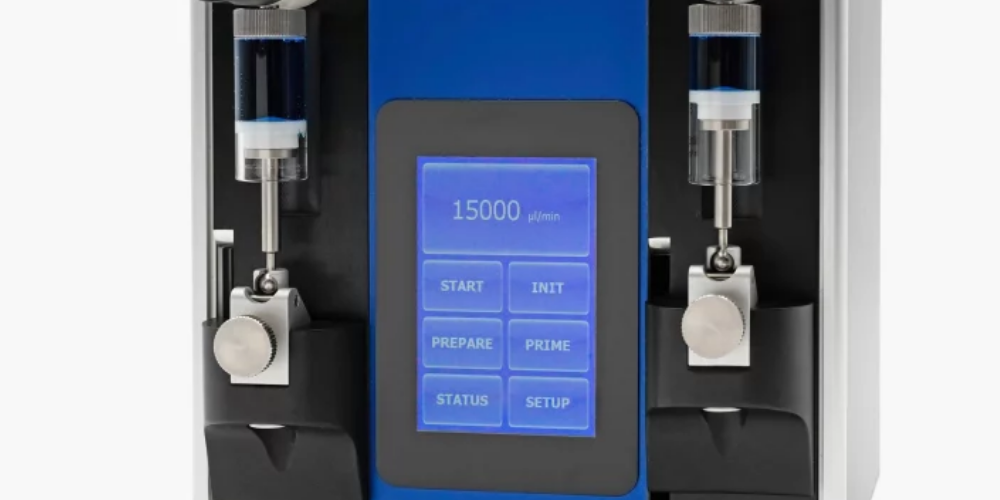
Our Educational Primer Series presents a deep dive into the technical elements that bring together the world of 4D Systems and what we have to offer. You’ll find that this information series, developed with our experts and engineers, is the perfect place to power up your knowledge and take your understanding of our hardware and software to the next level. As always, feel free to reach out and get in touch. The best learning is interactive and we’d love to hear from you.
File Downloads
How Does an LCD Work?
LCD screens are ubiquitous in a wide range of applications, from the giant high-definition screens you would find at a cricket stadium to the smaller displays you’d find in some of your personal gadgets such as digital watches, smartphones and laptop monitors. LCD technology also lies behind the displays of calculators, digital cameras, notification panels and many other electronic devices.
So what is an LCD? What are the components you’d find inside an LCD screen? How does an LCD work?
Let’s take a closer look.
What is an LCD?
The acronym, LCD, stands for Liquid Crystal Display. Liquid crystal, as the name suggests, is an organic substance that has two states – a liquid form and a crystal molecular form.
Friedrich Reinitzer, an Austrian botanist, first discovered liquid crystals in 1888. In the late 1800s and early 1900s, liquid crystal was only used for research purposes and in experiments. An American company, RCA Corporation, discovered that liquid crystals had electro-optical effects, i.e. when exposed to an electrical field, the liquid crystal could change from transparent to visible light to partially opaque. RCA recognised this value of liquid crystal and made the first experimental LCD in 1968. Since then, LCD manufacturers have found ways to improve the quality of LCD screens.

Basic Structure of an LCD
An LCD comprises of several layers. Starting from back to front, the parts of an LCD include the following layers:
- Reflective mirror
- Polarising film
- Glass filter
- Negative electrode plane
- Liquid crystal substance
- Positive electrode plane
- Glass filter
- Polarising film
- Display glass
The two layers of flexible polarising filters are set at a 90-degree angle to each other with a layer of liquid crystal solution lodged in between. The two glass sheets come with thin grids of transparent electrodes placed on their inside faces. Also, on the inner side of both the glass filters, a special polymer that creates microscopic grooves is applied. The grooves are aligned in the same direction as that of the polarising film. Once a coating of liquid crystals is added onto one of the filters, the grooves will cause the first layer of molecules to align with the filter’s orientation. Simultaneously, all the layers of the LCD components will twist and align until the uppermost layer is at a 90-degree angle to the bottom layer.
An LCD does not produce any illumination on its own and depends on an external source for light. If there is an external light source, it passes through the first filter, as it is polarised. The light then passes through each layer and is guided on to the next with the help of molecules. When the light passes through the liquid crystal layer, the molecules tend to change the light’s plane of vibration to match their own angle. As the light passes through the liquid crystal layer, it vibrates at the same angle as the final layer of molecules. If the angle of the final layer matches with the second polarised glass filter, then the light will pass through.
How Does an LCD Work?
When there is no current, the liquid crystal molecules are aligned parallel with the glass surface. The light entering through the front of the LCD hits the reflective mirror and bounces right back out. However, when a voltage is applied between the electrode planes, the liquid crystals tend to untwist and change their direction and turn vertical to the glass surface. This blocks the light coming through the layers that makes that area darker than the surrounding areas.
When the light passes through both filters, the screen looks lighter in colour, i.e. in different levels of grey. The motion of liquid crystal molecules together with the direction of the two polarisation filters can control the quantity of light transmission. This is the principle on which an LCD works.
For an LCD to produce a coloured image, coloured filters are used to generate red, green and blue pixels. A coloured dye is used in the liquid crystal and the liquid crystal molecule becomes a sub-pixel either generating red, green or blue light. Three of these sub-pixels together make a pixel and millions of pixels together form an image. Controlling the liquid crystals with voltage adjusts the colour and brightness of the image.
LCDs come with many advantages and are the preferred display medium for many applications. This is because LCDs produce a sharp image, use less power which translates to lower cost and less heat, can be made into larger sizes, is compact and thin, and more importantly, have a flat-screen.
There could be other technologies set to become the next big thing in displays, but for now, LCDs are here to stay.
To see the extensive range of screens from 4D Systems, visit: www.4dsystems.com.au/products/
Table of contents
Subscribe to our newsletter
Latest Case Studies

This case study unveils a practical application of embedded innovation, highlighting the process and outcomes of upgrading legacy systems in a technology-focused product line. Through strategic technological integration, the project not only uplifted product performance but also markedly improved customer satisfaction levels. The subsequent pages delve into various strategic and operational enhancements made, providing readers with a nuanced understanding of the concrete impacts and subtleties involved in a real-world, engineer-led embedded innovation initiative. A testament to blending traditional systems with modern innovation.

Duratec, specializing in liquid handling devices for various industries, aimed to simplify the control interfaces of their new product line. Partnering with 4D Systems, they integrated a touch display module enhancing user-centricity and operational efficiency. This transition replaced outdated control panels with an intuitive, modern interface without compromising on control capabilities via the RS232 interface. Three new devices were launched, improving user interactions through user-friendly touch displays, showcasing Duratec's commitment to innovation. This collaboration allowed for more straightforward control, monitoring, and interaction with Duratec's devices, ensuring a better user experience and meeting industry demands.

In the challenging process of creating an advanced 3D printer, BCN3D encountered an unexpected difficulty: finding an appropriate, user-friendly display module. Despite initial struggles, BCN3D discovered the solution in 4D Systems’ gen4 display modules. These modules offered superior resolution, processing power, and flexibility. Key to BCN3D's decision was the modules' easy integration via a serial connection and the Arduino-compatible library into their firmware. For its Sigma R17 3D printer, BCN3D upgraded to the gen4-ULCD-35DCT-CLB, a 3.5-inch Intelligent TFT-LCD display module with capacitive touch, further enhancing the user experience. The gen4 series of intelligent display modules perfectly matched BCN3D's requirements, offering innovative solutions in the sophisticated 3D printing space.

